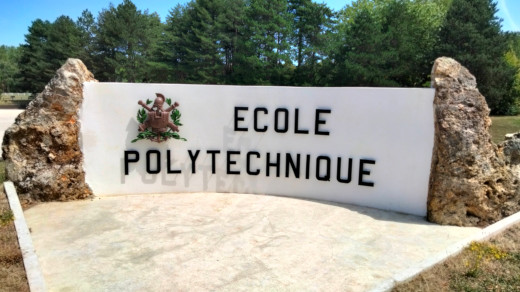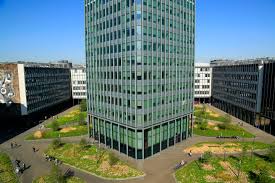Introduction
The Laboratoire de Météorologie Dynamique (UMR8539) (LMD) is a CNRS joint research unit, hosted by École polytechnique (X), École Normale Supérieure (ENS) and Sorbonne Université (SU), and is partner of École Nationale des Ponts et Chaussées (ENPC). The LMD, created in 1968, studies the climate and the environment for Earth and planetary atmospheres. It is an international laboratory with about 180 employees, half of whom are permanent staff, researchers, engineers and administrative staff. It also has some forty PhD students. It is composed of 6 scientific teams, support services (administrative group, IT group, technical group) and 2 hosted structures of the research federation Institut Pierre Simon Laplace (IPSL) (SIRTA observatory and data center) to which LMD belongs.
Missions

Research topics
The LMD is a leading international laboratory on the following themes:
- Dynamic atmospheric processes for Earth and planetary atmospheres
- Surface/atmosphere interactions (including land and ocean surfaces)
- Water cycle and clouds
- Atmospheric composition, pollution and large-scale transport
- Global and regional climate variability and change
- Societal impacts (health and energy)
Research on these themes is based on multiple methodological approaches: numerical modelling and observation of the atmosphere, ocean and continental surfaces at various scales, from local to global. Modelling activities include numerical methods and development of physical parameterisations. Observation activities include instrumental development, signal processing techniques and deployment of ground-based (contribution to the IPSL SIRTA experimental site), balloon-, aircraft- and satellite-based measurement systems. The LMD’s activities are mainly focused on knowledge production. They also include activities of valorization and transfer (software in relation to the forecasting of renewable energies, patent and prematuration of components of lidar systems) and support to the community (Community code CHIMERE for operational air quality forecasting, Community code LMDZ for climate modelling and the Community Mars climate database).
The scientific outlines of the teams ensure a high degree of internal coherence and the research conducted at the LMD is largely based on the complementarity of the scientific and technical tools and expertise of the different teams.
Affiliations



LMD is member
- Of Département de Géosciences de l’École Normale Supérieure
- Of Département de Mécanique de l’École polytechnique
- Of l’Unité de Formation et de Recherche Terre, Environnement, Biodiversité (TEB) de Sorbonne Université
LMD is member of Institut Pierre Simon Laplace (IPSL), federation of 9 public research laboratories in environmental sciences in Ile-de-France. The LMD plays a leading role in several projects, such as climate modelling, the SIRTA observation site at the École polytechnique, planetology, and servers and databases.
The LMD is also a member of the Centre Interdisciplinaire Energy4Climate, federation of 26 laboratories working on the energy transition.
The LMD belongs to 3 groups of universities and institutions :
- Institut Polytechnique de Paris
- Université Paris Sciences et Lettres (Université PSL)
- Sorbonne Université
Organigram
- Director: Philippe Drobinski (ENS,SU,X)
- Deputy directors: Fabio D’Andrea (ENS), François Forget (SU), Riwal Plougonven (X)
- Administrator: Gaëlle Bruant (ENS,SU,X)
- Prevention agents: Claire Cenac et Christophe Pietras (X), Laurent Fairhead (SU), Guillaume Lapeyre (ENS)
- Laser security agent: Dimitri Edouart (X)
- Training and RH referent: Isabelle Ricordel (X)
- IT agents: Julien Lenseigne (X), Franck Guyon (SU)

